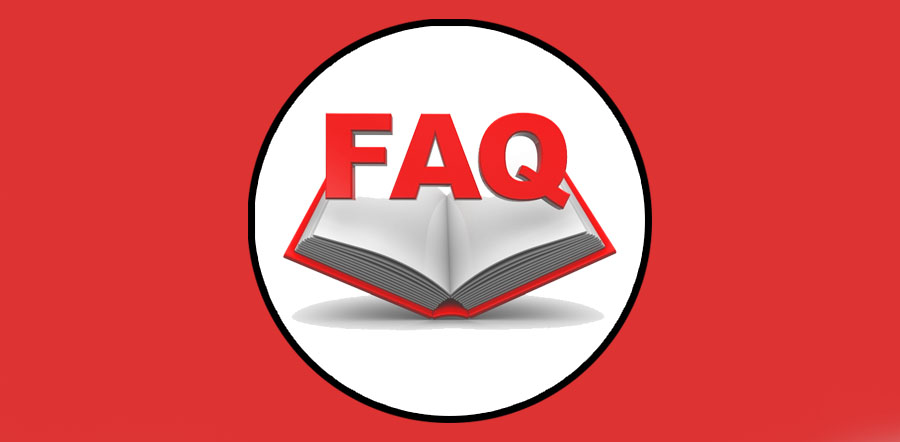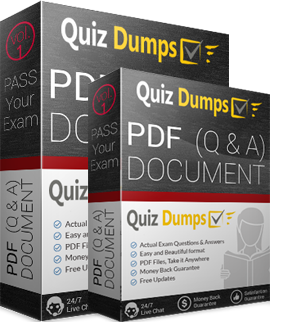SAFe-SPC
Guaranteed Success in SAFe-SPC Exam
| SAFe-SPC Exam Dumps PDF + Practice Test | |||
| Exam: | SAFe-SPC | ||
| Exam Name: | Scaled Agile SAFe Practice Consultant SPC (6.0) Exam | ||
| Certification(s): | SAFe Practice Consultant Certification | ||
| Questions: | 119 Questions Answers | ||
| Last Updated: | May 26,2025 | ||
| Price: | Was: $85 Today: $59 | ||
Check Free Demo Before Buy
$ 49.00 – $ 75.00
Are you looking for real SAFe-SPC exam questions ? You’re in the right place!
Pass your Scaled Agile SAFe-SPC exam with the latest QuizDumps PDF Questions & Answers.
QuizDumps offers authentic, updated, and expert-verified SAFe-SPC braindumps.
Want top scores? Start your prep now with QuizDumps study material.
1: Download Q&A PDF
Buy & Download 100% real, updated and verified exam questions and answers tested and prepared by Scaled Agile experts to pass SAFe-SPC exam.
2: Prepare
Prepare for SAFe-SPC with 100% confidence using QuizDumps's SAFe-SPC exam dumps PDF or SAFe-SPC practice exam.
3: Pass Your Exam
QuizDumps's SAFe-SPC exam kit prepares you to confidently ace all SAFe-SPC questions and pass on your first attempt with top scores.
Comments
Main points of Scaled Agile SAFe-SPC Test
The Scaled Agile Framework (SAFe) Program Consultant (SPC) exam covers a broad range of topics related to implementing and scaling Agile at the program level. The main points cluster around these key areas:
I. Understanding SAFe:
- SAFe Principles: A deep understanding of the underlying principles that guide SAFe implementation is crucial. This includes Lean-Agile principles and how they apply to large-scale development.
- SAFe Configuration: Familiarity with the different SAFe configurations (Essential, Large Solution, Full, Portfolio) and when to choose each one based on organizational context.
- SAFe Implementation Roadmap: Understanding the phases and steps involved in implementing SAFe within an organization, including the considerations for change management and organizational readiness.
- SAFe House of Lean: Understanding the core tenets of Lean thinking and how they translate into SAFe practices.
II. Program Level Implementation:
- Program Increment (PI) Planning: Mastering the intricacies of PI Planning, including its purpose, preparation, execution, and post-PI planning. This includes understanding the roles and responsibilities of various participants.
- Agile Release Trains (ARTs): Deep understanding of ART structure, composition, and how they function within the larger SAFe framework. This includes understanding the ART synchronization mechanism.
- Program Execution: Knowledge of various program execution practices, including daily stand-ups, sprint reviews, system demos, and retrospectives at the ART level. Understanding how these events support PI execution.
- Continuous Delivery Pipeline: Understanding how to establish and maintain a continuous delivery pipeline within SAFe, enabling faster and more reliable release cycles.
III. Lean Portfolio Management (LPM):
- Strategic Themes and Portfolio Vision: Aligning program and project work with overarching organizational strategy.
- Funding and Portfolio Budgeting: Understanding how financial resources are allocated and managed within a SAFe environment.
- Portfolio Kanban: Understanding how Portfolio Kanban is used to visualize and manage the flow of work at the portfolio level.
- Value Stream Management: Understanding the principles and practices of Value Stream Management and how it contributes to improved efficiency and outcomes.
IV. Leading and Coaching:
- Leading and Coaching Agile Teams: Understanding the nuances of leading and coaching teams in a scaled agile environment.
- Building High-Performing Agile Teams: Identifying and addressing obstacles to team performance.
- Change Management: Understanding the challenges of organizational change and how to effectively manage it during a SAFe implementation.
- Facilitating and Leading SAFe Events: Proficiency in facilitating and leading key SAFe events such as PI Planning, Inspect & Adapt workshops, and other program-level events.
V. Essential SAFe Practices:
- DevOps: Understanding the principles of DevOps and its integration within SAFe.
- Lean Software Development: Integrating Lean principles into the development process.
- Customer Centricity: Understanding the importance of focusing on customer needs and delivering value.
The exam tests your understanding of these concepts through a variety of question types, including multiple-choice, scenario-based, and process-oriented questions. Focusing on understanding the why behind SAFe practices, as well as the how , is critical for success. Simply memorizing facts won't be enough; you must demonstrate a deep understanding of the framework and its application.
| Exam Code | Certifications | Questions | Comments | Reviews |
|---|---|---|---|---|
| SAFe-RTE Dumps | Scaled Agile Framework Certifications | 214 Questions | 15 | 5 |
| SAFe-SASM Dumps | SAFe Scrum Master | 60 Questions | 13 | 5 |
| SAFe-APM Dumps | SAFe Certifications | 60 Questions | 12 | 3 |
| SAFe-POPM Dumps | SAFe Certifications | 45 Questions | 10 | 1 |
| SAFe-SGP Dumps | Scaled Agile SAFe Practitioner | 45 Questions | 8 | 1 |
| SAFe-Agilist Dumps | Scaled Agile Framework Certifications | 87 Questions | 6 | 4 |
| SAFe-SPC Dumps | SAFe Practice Consultant Certification | 119 Questions | 3 | 1 |
| SP-SAFe-Practitioner Dumps | SAFe Practitioner Certification | 269 Questions | 3 | 1 |
Why PDF Format?
Our PDF format offers seamless portability across multiple devices, allowing you to study anytime, anywhere. For a more immersive preparation, our Practice Test software replicates the real exam environment. With various testing modes and advanced self-assessment features, our practice exams stand out as the best in the industry.
Is This User Friendly & Easily Accessible on Mobile Devices?
We are committed to delivering precise SAFe Practice Consultant SPC (6.0) Exam questions and answers, accompanied by detailed explanations. At QuizDumps, we value your time and investment, ensuring that every question and answer is thoroughly verified by Scaled Agile experts. Our team consists of highly qualified professionals with years of hands-on experience in the field, guaranteeing reliable and up-to-date exam preparation.
Are All Materials Verified by Experts?
QuizDumps is a trusted name in certification exam preparation, offering [Authentic, Updated, and Real] SAFe-SPC Dumps, carefully crafted and verified by IT professionals. If you want to achieve top scores, kickstart your preparation today with our comprehensive SAFe-SPC dumps PDF.
What is Our Commitment !
At QuizDumps, we are committed to helping professionals pass their certification exams in the shortest time possible. Our goal is to provide top-quality study materials and exceptional customer support. We continuously enhance our Scaled Agile SAFe-SPC exam preparation resources by updating question banks, adding new features, and promptly addressing any reported issues.

